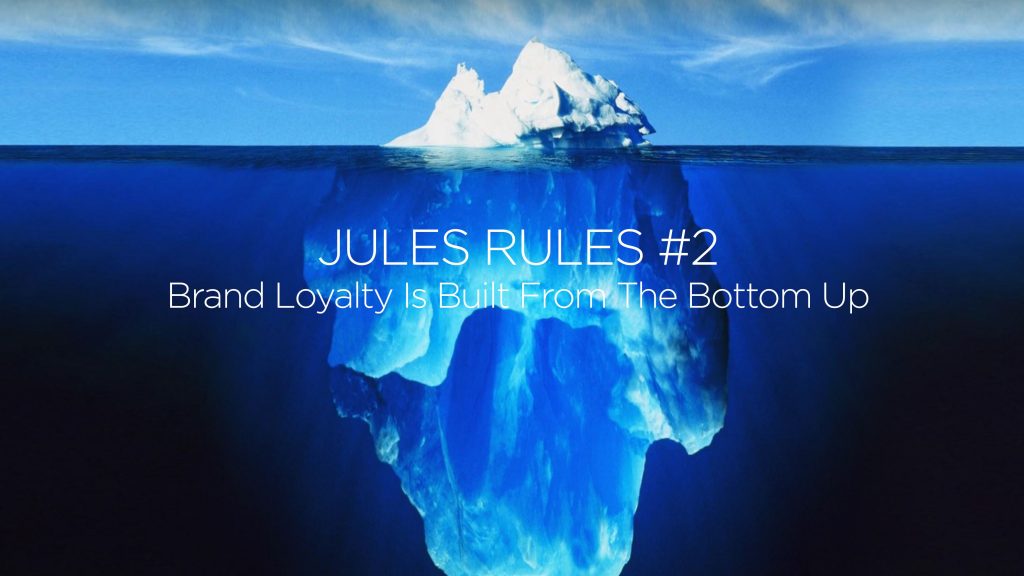Brand style guides are used by companies large and small to keep all aspects of their branding uniform. They are also helpful for designers and copywriters who need to create a cohesive look across multiple platforms.
These guidelines are not unfamiliar territory for marketers. They are typically referred to as “brand standards” and mainly deal with the elements of the logo — do’s and don’ts that often go without a second thought and are usually filed in PDF form in the never-to-be-seen folder.
 Unsurprisingly, we all use the same words and phrases but often with different meanings. One example is “brand guide” or “style guide,” or even “brand style guide.” This difference was painfully evident when we provided an estimate for a brand guide, and the recipient responded, “This price seems excessive. The design resources are usually too busy to refer to a style guide.” I was speechless and mildly insulted, but I realized these terms are (unfortunately) often used interchangeably.
Unsurprisingly, we all use the same words and phrases but often with different meanings. One example is “brand guide” or “style guide,” or even “brand style guide.” This difference was painfully evident when we provided an estimate for a brand guide, and the recipient responded, “This price seems excessive. The design resources are usually too busy to refer to a style guide.” I was speechless and mildly insulted, but I realized these terms are (unfortunately) often used interchangeably.
In some cases, this type of documentation may not even exist. In working with a rather sizeable online gaming operation, I was surprised that they had no written standards for the logo they were handing out like candy to new partners.
Even in these cases, companies invest a copious amount of time and resources into developing their brands. Yet somehow, by and large, this effort only relates to the logo design, relegating the brand guidelines to colors and fonts.
Why a Brand Style Guide is Necessary
A logo style guide is absolutely essential to creating a robust framework and starting point for your brand’s visual identity. As the graphic expression of your brand, you want to ensure consistency and correct usage. That consistency is only ONE essential part of building a brand that will build awareness over time. But, you also want to build trust with that awareness. That’s where all of those branded touchpoints come in.
Brand style guides (BSGs) will support your initiatives by ensuring actions are relevant to the brand’s goals and vision. Programs based on the BSG will help separate you from your competition in a way only you can own. When leveraged across the business, your BSG will influence your consumer messages and determine how you speak to employees, the investment community, and the community at large. The brand will affect your future and current employees and their perceptions of how you treat employees and candidates.
Jules Rules #2: Brand loyalty is built from the bottom up.
The Time Has Come
I think I’ve banged my drum enough to hope we can all agree that a brand is more than just a logo. Your brand is how and what your customers and target audiences think and feel when they see or hear your name, your communications, and your stories. It comes across in your tone, manner, images, and interactions. A properly formed brand style guide makes the brand understandable to all and influences actions so the brand can come to life at all touchpoints. And at the very bottom is your brand style guide (or BSG).
Today, there is no question that our brands touch every fiber of our operations. The time has come to reevaluate our existing guidelines to support every part of our organization – human resources, operations, finance, technology, and more.
How to Create Your Brand Style Guide
A brand style guide is a collection of rules that dictate what goes into every aspect of your business. These guidelines help you make sure that your logo stays consistent, your website looks the same, and your ads are easy to recognize.
Start with a Vision
Before you create your brand style guide, you need to consider what you want your brand to stand for. What do you want people to associate with your company? Do you want them to think of you as an innovative leader in your industry? Or do you want them to consider your product reliable and high quality? Whatever vision you choose, make sure it’s something that will resonate with all stakeholders: employees, customers, vendors, the community, and investors.
What to Include in Your Brand Style Guide
Once you’ve decided what your brand stands for, your brand style guide will show everyone how to communicate that message in graphics, voice, and even experience.
Good BSGs will include all of the following and maybe even more.
- Brand essence and positioning statement
- Brand history, if available
- Brand architecture, if applicable
- Any visual cues integral to the brand’s visual identity, such as icons, calls to action, and treatments. These elements can be as essential as any.
- Logo specifications should be articulated, including colors for print and web and any secondary logos, wordmarks, or monograms. You must consider usage for today and possibly for tomorrow. A current use review should provide insight if you have an existing mark.
- Colors can vary by production process and devices. To ensure consistency, you should specify values for each application. Include primary, secondary, and tertiary colors, limited and single-color logo versions (particularly important when producing promotional items), Pantone, CMYK, RGB, and hex colors.
- It is vital to address logo placement and size specifications, both minimum and in relation to other assets, with examples showing how to use and how not to use the logo. If you are like me and have inherited a heritage brand, there are likely many examples of improper usage that can be included as “do not use” examples.
- Marketers and businesses are using a variety of formats. What was once print and broadcast has become how-to’s, infographics, and even motion graphics. Include information on how to stay on-brand with these new formats and opportunities.
- Fonts should be a part of the style guide, along with their weights, usage, and alternative web-safe options. Additionally, there should be direction on how elements, such as titles and headlines, body copy, and legal disclaimers, should be styled.
- Digital and web-safe specifications such as fonts, buttons, elements, and icons are a modern-day must.
- Presentations and email signatures can be an excellent opportunity to build upon your brand. Providing templates and swipe files might be your best investment in this process.
- Not all brands can afford a custom photo shoot. If your brand must rely on stock, examples of images that represent your brand should also be included.
- The visual elements of a brand are only one part of the whole. Small details can be lost in writing, but if applied correctly and consistently, they can convey the brand’s tone. Writing can show a lack of coherent thinking when tone and voice are inconsistent.
- Voice and tone of writing, including keywords and style, as well as your brand key messages, should be included in detail.
Consumers will personify brands as if they were real people. So, the tone that you’re using across your marketing and touchpoints will further bring that personality to life. This can also include how we communicate as team members and with customers. Including information such as “words we never use” can give team members valuable guidance.
- Begin with your brand’s tone and voice. These may be reflected in such things as taglines and slogans, but understanding how your brand speaks on several topics is a valuable exploration. If your brand is fun, explain what that means, so it is not open to personal interpretation. If your brand is instructional or knowledgeable, you might include a helpful tip in everything you do.
- If your brand writing follows an existing style guide such as the AP Stylebook, consider including a link to it for easy reference since this document will undergo periodic updates.
- If you opt for differences such as the use of the Oxford comma, make that a precise point in the writing section.
- A section of formatting of such things as bullets, lists, dates, times, and pricing will ensure consistency across departments.
- Spelling and application of industry terms and names can be the most-used part of your guidelines.
- Sentence structure may seem easy, but it can vary by brand. So, you want to identify what fits your brand. This should include copy from headline to disclaimers.
- Including a section on terms and usage to avoid is an essential part of our brand style guide.
- Asset libraries, such as images and trademarks, and the proper/improper applications should be included in your guide.
- Social media is quickly becoming the go-to channel for communications. So while brand guides have traditionally focused on print materials, translating your brand’s personality to these channels is critical. Therefore guidelines for social media must be included. This can consist of how we respond to inquiries, build online communities, and use organic images.
- Your video content should align with your brand and all supporting materials. Yet often, more care and time is given to the design of a set than to ensuring that the same carefully crafted set reflects the brand. Even things such as wardrobe can create dissonance if it is not in keeping with the brand’s personality. Music in the background, props, and various details such as filming style can seamlessly enhance the brand when used correctly.
Test Drive Your New Brand Style Guide
To test your brand style guide, start by creating a few different versions of each element. Then, ask people who aren’t part of your team to try them out. This informal research process will help you see whether your branding choices make sense, are useable, and whether there are any gaps in your knowledge.
Your Brand Style Guide Should Grow and Adjust
Marketing channels and consumer tastes are continuously changing. And although a brand is established for the long haul, you cannot set your brand style guide in stone. The reality is that these documents reflect a particular time in the brand’s life.
These documents can provide much-needed direction, but they must allow us to adapt. A perfect example is social media. New formats and opportunities are tested and rolled out. So, we must take existing guidelines and experiment with new forms until we find an execution that satisfies both the platform and our brand strategy. Once that receives critical adoption, those new guidelines can be added to the central document.
Great BSGs will become a living guidebook for the brand, growing and adjusting to market, media, and consumer changes, taking varied nuances into account.
Brand Guidelines Must Be Accessible to Varied Users
Because your brand vision must resonate with several disparate audiences, your BSG must be developed with this varied audience in mind.
Human resources will rely on guidance as they recruit, employ, train, and (yes) separate from team members. Publicly traded companies have ongoing discussions with the investment community, and how they tell the brand story is crucial. You may have executives who travel the speaking circuit.
For these reasons, your brand guidelines must be clear, easy to understand, and readily accessible to many audiences. When developed with this in mind, you can ensure everyone will be on the same page.
A comprehensive brand style guide will define the company’s language and visual image to ensure a consistent tone throughout all communications. Additionally, it will drive a cohesive customer experience to nurture trust and loyalty over time for current and future customers.





Recent Comments